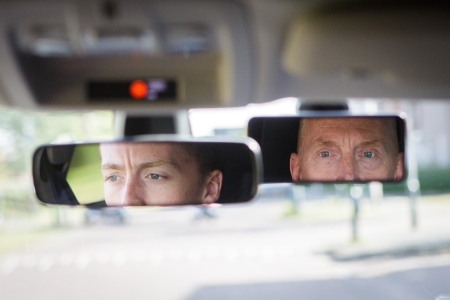Every motorized road user needs to have a driving licence. There are different licences for microcars, mopeds, light mopeds, motorcycles, cars, lorries, buses and tractors. For riding an e-bike with pedal support up to 25 km/h no licence is needed, whereas it is for riding an e-bike with pedal support up to 45 km/h (‘speed pedelecs’). To qualify for licence acquisition, candidates need to be of a certain age, be healthy, and have the knowledge and skills needed to be safe, smooth and eco-friendly road users.
In the Netherlands, driving skills are assessed during a two-tiered theory and practical test (also see the question What is assessed in driving test B?. There are age limits for starting driver training in certain vehicles and for taking the two exams. See table 1 for the most common categories; on the website of the Dutch Driving Test Organisation (CBR in Dutch, www.CBR.nl), information about all licence categories may be found.
|
Licence category |
Vehicle |
Experience |
Minimum age driving lessons |
Minimum age theory test |
Minimum age practical driving test |
|
AM |
Microcar, moped, light moped, speed pedelec |
|
16 |
15,5 |
16 |
|
A1 |
Light motorcycle (125 cc and maximum power output of 11 kW) |
|
17 |
17 |
18 |
|
A2 |
Medium power motorcycle (maximum power output of 35 kW) |
Novice |
20 |
17 |
20 |
|
A1-licenced |
19 |
No theory test necessary |
20 |
||
|
A |
Unlimited-power motorcycle |
Novice |
21 |
17 |
24 |
|
A2-licenced |
21 |
No theory test necessary |
22 |
||
|
B |
Car and delivery van |
|
16,5 |
16 |
17 (unaccompanied from age 18) |
|
C1 |
Lorry (3500-7500 kg) |
B-licenced |
17 |
17 |
18 |
|
For professional transport: B + licenced and skilled |
17 |
17 |
18 |
||
|
C |
Lorry (> 3500 kg) |
B-licenced |
17 |
17 |
21 |
|
For professional transport: B + licenced and skilled |
17 |
17 |
18 |
||
|
D/D1 |
Bus (> 8 seats, D1 bus ≤ 8 m) |
Professional qualification needed for professional passenger transport |
17 |
17 |
18 (up to 21 only licenced for public transport bus < 50 km/h) |
|
T |
Tractor |
|
16 |
15,5 |
16 |
Table 1. Minimum age driving lessons and driving test for different vehicle categories.
More information about the requirements for driving motorized vehicles is to be found in SWOV fact sheets Moped and light-moped riders, Motorcyclists, Agricultural traffic (including What is the road safety effect of the T-licence?)) and in fact sheet Trucks and delivery vans.
This fact sheet does not pay attention to what is needed for someone to retain their licence nor to the assessment of fitness to drive for the elderly (age-related assessment) (see fact sheet The elderly in traffic).
